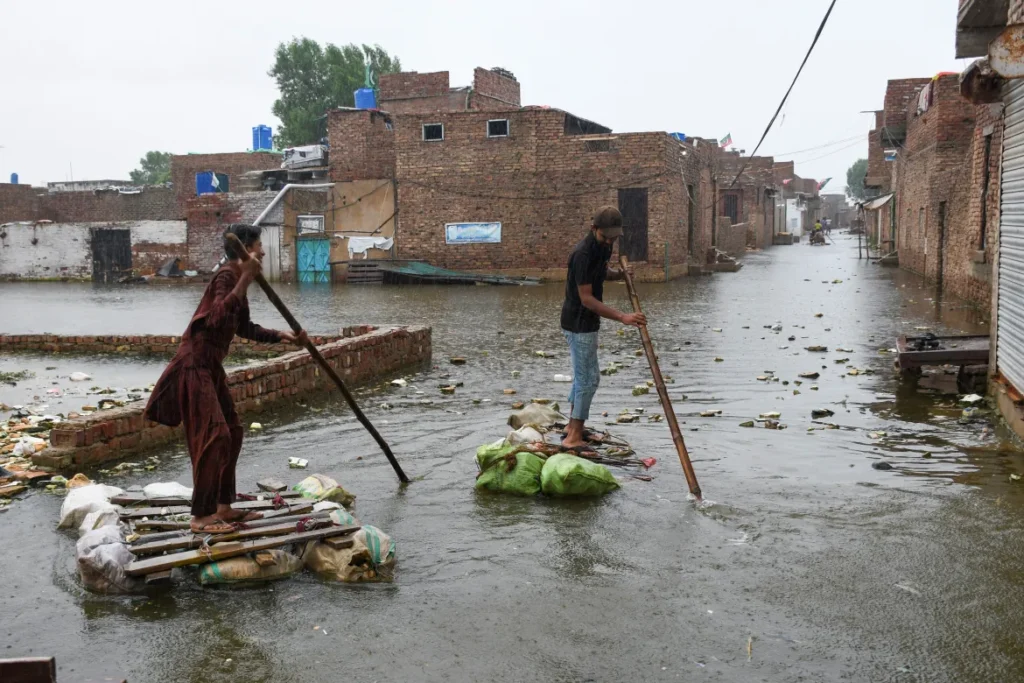The Pakistan Meteorological Department (PMD) has issued an urgent advisory predicting widespread monsoon rains across the country starting June 25, warning of flash floods, landslides, and potential road closures in vulnerable regions. The alert comes amid growing concerns about extreme weather conditions driven by climate change, with Pakistan consistently ranked among the world’s most climate-vulnerable nations.
According to the latest PMD forecast, moist currents from the Arabian Sea are penetrating the upper and central regions of Pakistan and are likely to intensify in the coming days. Additionally, a westerly wave is expected to arrive in the upper parts of the country on June 25, gaining significant strength by June 26.
Affected Regions and Forecast
The PMD expects scattered heavy rainfall across Azad Kashmir between June 24 and July 2, with intense weather also predicted in various parts of Gilgit-Baltistan, including Diamir, Astore, Ghizer, Skardu, Hunza, Gilgit, Ghanche, and Shigar from June 26 to June 29.
In Punjab, heavy rains with thunder and lightning are expected in cities including Lahore, Rawalpindi, Islamabad, Murree, Galiyat, Sialkot, Gujranwala, Chakwal, Jhelum, and Narowal, from June 25 to July 1. Authorities anticipate above-average rainfall in the region, raising concerns over urban flooding and traffic disruptions.
In Khyber Pakhtunkhwa (KP), residents of Swat, Kohistan, Dir, Chitral, Mansehra, Abbottabad, Haripur, Bajaur, and Kurram have been warned to expect thunderstorms and heavy downpours, which could result in landslides and blocked roads, particularly in hilly terrain.
The forecast for Balochistan includes rain and thunderstorms in Sherani, Loralai, Barkhan, Khuzdar, Sibbi, Kalat, and Dera Bugti, primarily from June 25 to June 28. Similar weather patterns are forecast in Sindh, particularly in Karachi, Hyderabad, Sukkur, Jacobabad, Larkana, Tharparkar, and Thatta.

Flash Flood and Landslide Risks
The PMD has issued a flash flood warning for low-lying and mountainous regions, particularly Murree, Galiyat, Dir, Swat, Shangla, and the Islamabad/Rawalpindi areas. Sudden downpours could overwhelm drainage systems, putting lives and infrastructure at risk. Landslides could obstruct major roads and highways, disrupting travel and emergency response.
Public Advisory and Precautionary Measures
The PMD has strongly advised travelers, tourists, and local residents in high-risk zones to remain vigilant and avoid unnecessary movement during the wet spell. Tourists heading to northern areas have been urged to check weather updates regularly and avoid hiking or camping in unstable terrains.
Farmers are encouraged to plan agricultural activities around the forecast, and emergency services have been asked to stay on high alert. Local authorities are coordinating with disaster response teams to prepare for possible evacuations and to secure flood-prone zones.
“All concerned departments and local administrations are advised to remain ALERT and take proactive measures to mitigate potential damage and loss of life,” the press release concluded.
As monsoon season officially begins, authorities across Pakistan are reinforcing flood defenses, emergency shelters, and monitoring systems in a bid to reduce the catastrophic effects seen in previous years, especially during the 2022 floods that displaced millions.
#PakistanWeather #MonsoonAlert #FlashFloodWarning #LandslideRisk #PMDAlert #ClimateCrisis #PakistanFloods #MonsoonSeason2025 #RainForecast #DisasterPreparedness

















